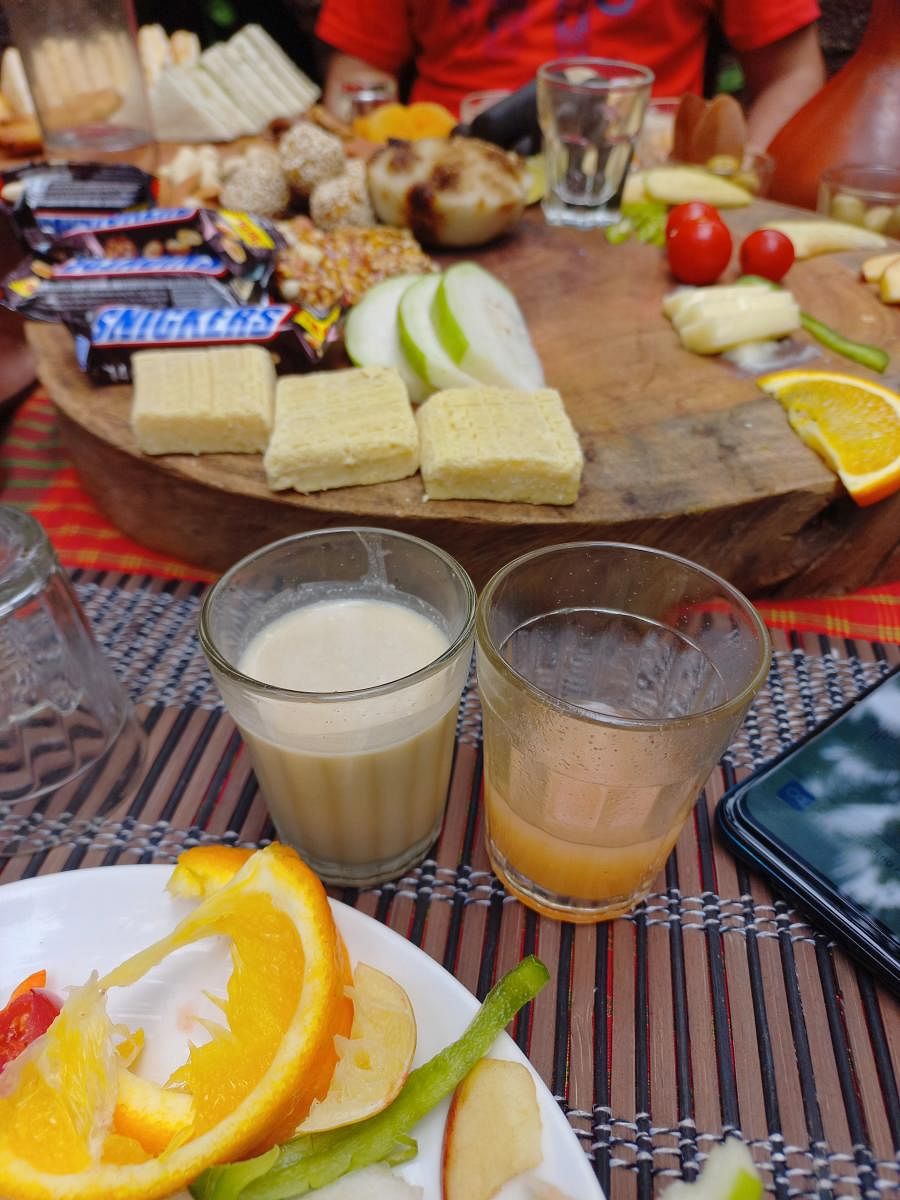All about feni & fun


Was it the sound of water dropping from a drenched branch on a leaf? Or was it the fuzzy noise that soft drinks make when bottles are opened? I had crouched and lowered my torso to place my ears into the opening of an earthen vessel that was planted midway into the ground. To me, the sound felt like that of rainfall. I was at Fazenda Cazulo, a farm and distillery in Goa, trying hard to catch the sound of the live fermentation of cashew juice.
Cashew feni is a strong alcoholic beverage with a fruity flavour. It is made by fermenting the juice of cashew apples and then distilling it. The drink is indigenous to Goa and secured a Geographical Indication (GI) in the year 2009. Coconut feni, which is made by distilling toddy or the fermented sap of coconut trees, is also common in Goa.
Though coconut feni predates the arrival of the Portuguese, the history of cashew feni is tied to the Portuguese-era Goa of the 16th century. The Portuguese brought cashews from Brazil and planted them in Goa. The plant adapted well, but cashew apples have no shelf-life. Touching the fruits expedites their decay and fermentation. The plant contains urushiol, a substance that causes skin rashes and
blisters. Eventually, though, the indigenous populace found a way to make use of the inedible cashew apples — by making liquor.
How is feni made
I was at the farm for a guided feni pairing experience — a brunch that takes place on a table set in a freshwater stream. But before the feast, I must see the yeast at work! Aaron Coutinho, a feni expert, greeted me with a glass of pea-flower infused urraca (urrak) — light refreshing alcohol obtained from the first distil of the fermented cashew juice.
Dried leaves crunched beneath our feet. Plump cashew apples dangled from low-hanging branches. “When will these be plucked?” I asked. “Never. We only collect the fallen ones,” Aaron replied. The sweet afternoon summer breeze of Goa grazes the cashew branches and only the ripe fruits fall down. The workers then use a cáánto — a stick with a thorn — to pierce the fruits and tap them into a
bucket. On a platform, two people wearing gumboots stomp the fruits to release a sweet, cloudy, opaque juice. This is collected and fermented in earthen pots called bhanñ buried halfway underground.
The centuries-old distillery was adopted in 2017 by Cazulo in a partnership model. The current batch of earthen pots is from the 1970s. Instead of spinning wheels, the potters used their forearms as wheels while shaping the pots. However, these skilled potters have now abandoned their profession and their stories have
become legends in the feni circle. “You need to be very tall to have such a long forearm. Back in the day, the potters tried to maintain their tall genome by marrying the thinnest and tallest woman in the village,” said Aaron.
The cashew juice produces yeast and self-ferments for three days after which the yeast dies. Next, the fermented juice is heated and the vapour is channelled through to a condensation tank for distillation. The double-distilled beverage is feni.
How to pair feni
Done with the farm touring, I was ready for the ultimate high — feni pairing. I descended into the water of the stream where a table was already set. Fruits, savouries and sweets from Goa were neatly arranged on my platter.
At the first sip of cashew feni, I detected sweet fruity notes. One by one I paired the feni with green apple, red apple, guava, orange, lime and cherry tomato. I loved it with green apple and lime, and thankfully Aaron validated me. Next up was a cube of cheese and then a traditional Goan sweet named perad, made of guava puree
and coconut jaggery. While cheese did absolutely nothing, perad and feni coupled very well.
In the spicy platter, pairing with green chillies enhanced the feni while peppercorn burned my mouth, nose and ears. Now I know not to order creamy dairy foods and spicy snacks while enjoying feni. Coconut feni is paired best with the bitter-tangy fruit karonda. Slightly intoxicated by then, I forgot about pairing for a while and devoured on sannas, sweet spongy cakes made out of toddy fermented rice and coconut jaggery. I was not feasting alone — a school of fish was nibbling the dead skin off my submerged feet, giving me a free fish spa.
Next came a Goan dessert called patoleo made of coconut, rice and jaggery — here the recipe has been broken down and transformed into patoleo feni cocktail. I paired it with doce, a sweet made with chana dal, coconut and white jaggery. Finally arrived dukshiri, coconut feni infused with the aromatic roots of Indian Sarasaparilla. It tasted like burnt peanut and paired well with penagre, a sweet made of roasted rice and coconut jaggery.
Three cheers to feni for helping people feast and make merry for ages!
Deccan Herald is on WhatsApp Channels| Join now for Breaking News & Editor's Picks